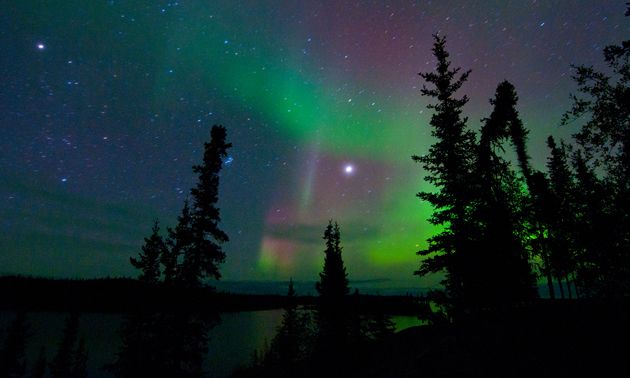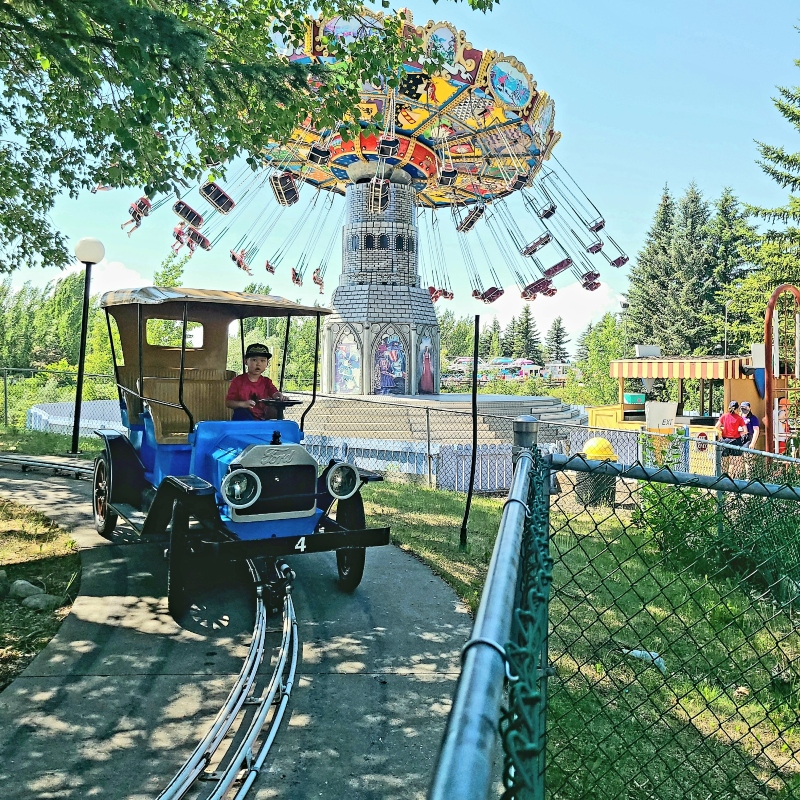Colour and light in the frozen North
The aurora borealis light up winter nights in the Northwest Territories, and in summer the sun barely sets

A tour of the Northwest Territories tourism website reveals that there is lots of colour and lots of light in the Northwest Territories, whether it’s in the depths of the long, dark winter or the height of the short, bright summer.
Winter lights
The main tourist draw during the winter is the spectacular aurora borealis, visible pretty much any night between August 15 and April 15, as long as the sky is clear. From April through August, the night sky doesn’t get dark enough to allow the aurora to be visible. The website Astronomy North alerts locals about aurora borealis activity via an aurora forecast, and anything in the active or extreme range is worth getting out of bed to see.
“It’s beautiful and unusual and always a good show,” said Julie Warnock, who has lived in Yellowknife for seven years. “I had seen the aurora before, in Vancouver and Kelowna, so I thought I knew what it would be like, but it completely took me by surprise. The colours here are so much more vivid, especially the green and occasional magenta, and the activity can be wild.”
A quick note about the origin of the name of Yellowknife. Historically, the aboriginal peoples in the region made their tools and implements out of copper, and they became known as the people of the yellow knives, which influenced the naming of the area’s largest community.
Summer's best
Once the snow starts to melt in the Territories—which can happen anytime from late April to mid-May—spring quickly follows. With a frost-free season of just 50 to 100 days, many of the native plants lie low or have other means of protecting themselves from winds and low temperatures.
In summer, the main tourist attraction is outdoor activity: fishing, canoeing, hiking and hunting. There are uncounted lakes in the Territories—many of which are unnamed—and the fish that inhabit those lakes and the rivers are often enormous and always hungry.
“The fishing up here is unbelievable,” Warnock said. “This is a great place for the novice fisherman, because they’ll get lots of practice casting and landing fish. You don’t need to take a book with you, because you’ll be busy. Your arms will be tired before the fish stop biting.”
The Deh Cho Travel Connection—which partly follows the Waterfalls Route—goes from Grimshaw, Alberta, up through Yellowknife and down through northern B.C. The route connects Nahanni National Park Reserve and Wood Buffalo National Park, both UNESCO World Heritage Sites.
At Nahanni National Park Reserve, “flightseeing” (sightseeing from an aircraft) is recommended as a way to explore and appreciate the wilderness, including the South Nahanni River, with its four canyons and dramatic Virginia Falls. Wood Buffalo National Park’s attractions include salt plains, karst formations, buffalo herds, beautiful hikes and unique topography.
The Yellowknife and surrounding area campgrounds open on May 15 and close on September 15. The campgrounds are well serviced and a number of them have sites with power.






